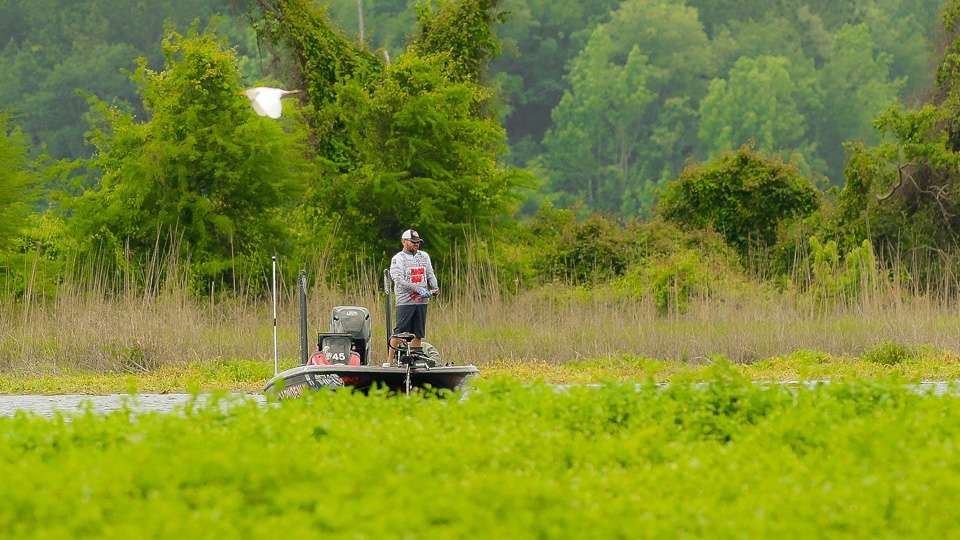
We’ve had a series of bad storms around the country for the past few weeks. Heavy rain in a short period of time seems to be the norm, and it doesn’t look to get any better. This has the effect of making a lot of our water dirty. Some of it looks more like chili than anything else.
Here’s the deal, though: That’s not as bad as many anglers think. Cold, muddy water is tough but warm, muddy water isn’t really that bad. Don’t let it get into your head. All you have to do is make a few adjustments when it comes to finding them. Think water conditions rather than postspawn or early summer.
Bass in real muddy water have a tendency to move shallow. I usually find them about as deep as the light penetrates. For some reason they don’t like to be down in the pitch black, but they also don’t like to be up near the surface. They stay close to the bottom but not on it and right at the point where the light disappears.
The other thing is that they stay right on cover. It seems like when the water’s a little clearer they relate to cover. They’re around it more than right on it. But when it’s real muddy they’re right on it, almost touching sometimes. That’s even more true when there’s a strong current.
A largemouth bass can’t handle a fierce current for very long. They have to get behind something or move into slack water areas. And, there’s almost always a lot of that kind of water available because muddy water caused by storms also means a lot of water moves up and floods places that are normally dry.
That’s usually your best water. Not only does it meet the conditions I’ve already described but grass and bushes as well as other stuff on the shore filter the water. The difference in color might be slight and not look all that significant to us. However, a bass living in it sees that slight difference as huge.
Muddy water bass are target oriented bass. That means we should be target oriented, too. If I run into a bay or backwater area, I immediately look towards the shore. I want to see something that’s shallow, out of the current and has cover in it. I don’t care if that cover is a stump, a laydown, a rock or a flooded dock. And, if there’s something back there that’ll filter the water so much the better.
However, if I’m fishing a river or out in the main lake where there’s a pretty good current the only thing I’m really looking for is the current break. That’s the one factor that’ll make up for anything else. They have to be able to get out of that moving water and rest. It’s the only way they can survive.
Next time we’re going to talk about picking lures for muddy water. That’s a pretty basic deal, really. Think water movement, noise, size and color.

